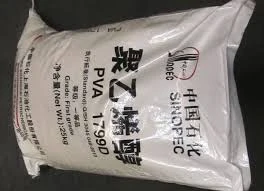The Versatility of Cellulose Polymer Nature's Green Wonder
Cellulose, a naturally occurring polymer found in the cell walls of plants, is one of the most abundant organic compounds on Earth. Composed of linear chains of glucose units, it provides structural support to plants and is a vital component of various biological processes. The impressive versatility of cellulose, particularly in its polymer form, has led to its use in a multitude of applications across diverse industries.
The Versatility of Cellulose Polymer Nature's Green Wonder
In the textile industry, cellulose polymers are transformed into fibers such as rayon and lyocell, which are used to produce textiles that are soft, breathable, and absorbent. These fabrics have gained popularity as eco-friendly alternatives to traditional synthetic materials. Moreover, cellulose-based fibers offer comfort and durability, making them appealing options for both manufacturers and consumers.
'cellulose polymer'

The food industry benefits significantly from cellulose polymers as well. They are commonly used as thickeners, emulsifiers, and stabilizers in a variety of food products. Cellulose can enhance the texture and stability of sauces, dressings, and processed foods, while also providing dietary fiber, which is essential for digestive health. As the demand for healthier food options increases, cellulose's role in enhancing food quality and nutrition is becoming increasingly important.
Additionally, the pharmaceutical sector relies on cellulose polymers for drug formulation. Cellulose derivatives are employed as excipients in tablets and capsules, aiding in drug delivery and absorption. Their biocompatibility and non-toxicity make them ideal candidates for various medical applications, including wound dressings and controlled-release drug formulations.
Beyond these industries, cellulose polymers are making strides in the field of renewable energy. Researchers are exploring ways to convert cellulose into biofuels, providing a clean and sustainable alternative to fossil fuels. This shift not only addresses energy demands but also helps reduce greenhouse gas emissions, contributing to a more sustainable future.
In conclusion, cellulose polymers represent a remarkable intersection of nature and technology. Their multifunctionality, sustainability, and biocompatibility make them an essential resource in numerous fields, from textiles and food to pharmaceuticals and energy. As we continue to seek sustainable solutions in our rapidly changing world, cellulose polymers stand out as a promising material that embodies the principles of environmental stewardship and innovation. By harnessing the potential of this natural polymer, we can pave the way for a greener, more sustainable future.
-
The Application and Significance of Construction RdpNewsMay.19,2025
-
Industrial Grade HpmcNewsMay.19,2025
-
Building Coating Adhesive Building Coating Adhesive HpmcNewsMay.19,2025
-
Application Of Hpmc For Detergent For Detergent In DetergentsNewsMay.19,2025
-
Application Of Hpmc Cellulose In Cement-Based MaterialsNewsMay.19,2025
-
Application Of High Quality Hpmc For Construction In The Field Of ConstructionNewsMay.19,2025




